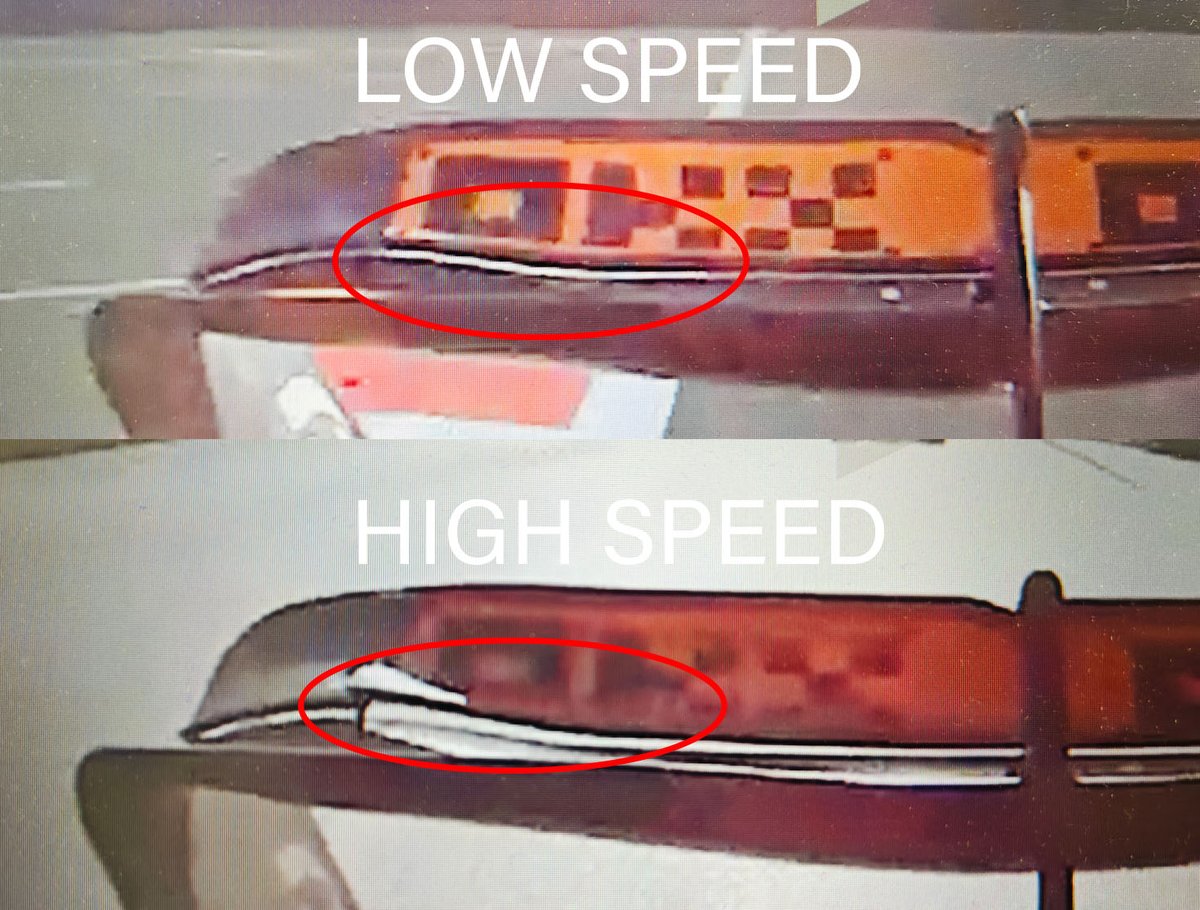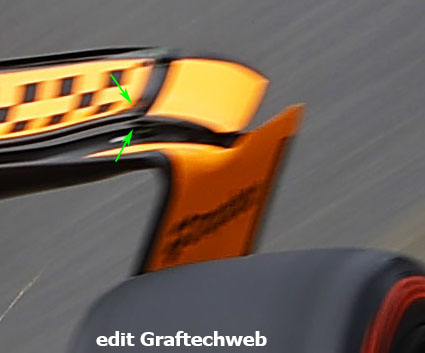The whole wing is first flexing around pylon anchor point, like all other wings. When it tilts enough, the stagnation point on the leading edge of DRS flap tips (the flexing ones) causes initial flap flexing. This starts twisting this section around twisting axis more and more and it leads to increased stagnation flexing/twisting and at the same time the incidence angle is lower. With bigger slot, you get additional drag shedding from two phenomena:venkyhere wrote: ↑17 Sep 2024, 14:33Although the flaps are roughly same size in the above image, the incline is vastly different, isn't it ? (the reference 'dots' show it) McLaren's flap's outboard bottom end is 'peeking up' from the main plane's high pressure (local area) surface ; while the flap's outboard top end (hinge) has local load high pressure => at high speed it's like a clockwise/anti-clockwise (depending which side-view of the wing we take) torque is acting on the hinge, even when DRS is disabled => it 'lifts'. That's clever.
Ferrari and Redbull have gone for more upright flap, where the outboard bottom of the flap is almost very near the mainplane high pressure surface ; and crucially, severe edge vortex generating sharp ends on the flap outboard support, thus keeping their flap 'well shut' when no DRS is there. McLaren low DF wing is a hybrid of the Ferrari/Redbull style and Mercedes style low DF wings, with much more 'benign' flap outboard supports.
- smaller frontal area
- less overall local pressurisation (due to bigger gap, ie. less converging channel form)


